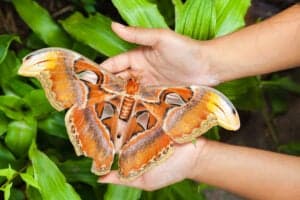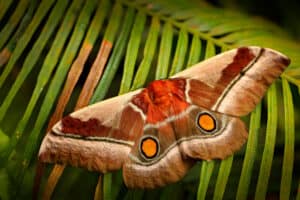Luna moths are some of the most iconic members of their species. Their large green wings and striking eyespots create one of the most elegant moths in the world. But have you ever wondered how to discern a male luna moth from a female? Although it may not be obvious, several prominent characteristics distinguish the two genders. Today, we discuss three key differences between male and female luna moths.
Luna Moths: A Brief History
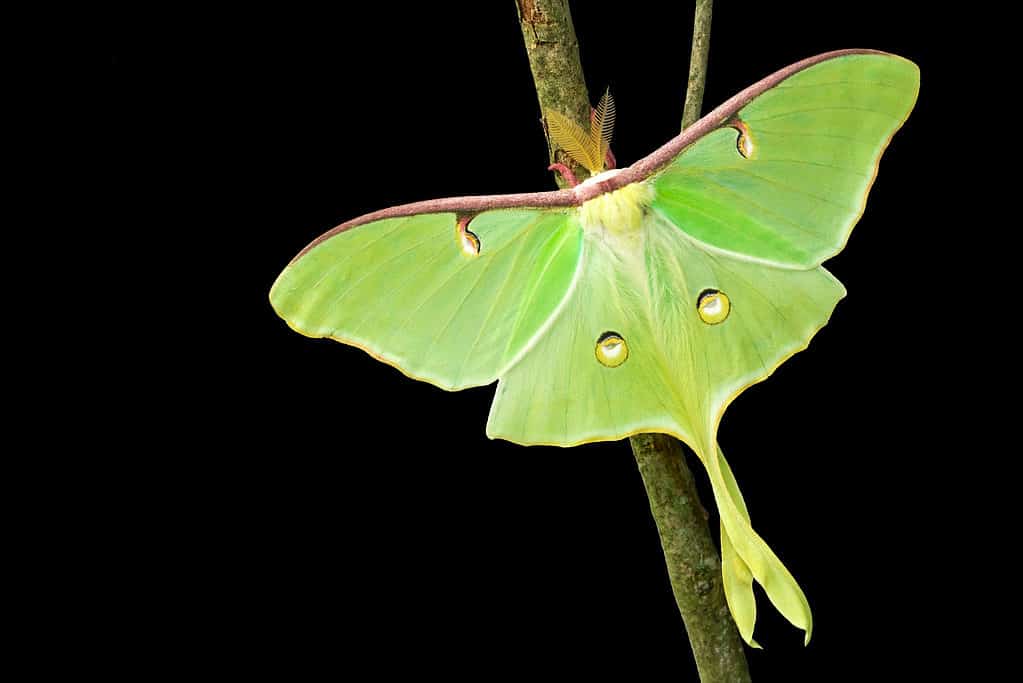
On average, luna moths live for less than two weeks.
©JasonYoder/Shutterstock.com
Actias luna, also known as the luna moth or moon moth, is one of the largest moths native to North America. A naturalist named James Petiver first described the luna moth in the early 1700s. They are commonly found all throughout the eastern portion of the United States, and some even inhabit parts of Canada. The temperature determines how many generations occur per year. Up north, only one generation typically emerges during the peak summer months. However, deeper in the south, it is not unheard of for there to be three generations yearly. These moths emerge from early spring to late summer.
Although the population of luna moths is stable at present, things were not always this way. At one point, a tachinid fly was introduced to North America in an attempt to curb populations of the harmful spongy moth. Although it was successful in this mission, it began to also harm populations of giant silk moths, and luna moths were among those affected. According to a journal article authored by Kellogg et al. (2003), researchers “found that C. concinnata was responsible for 78% of the parasitism on A. luna caterpillars in a site near the leading edge of the gypsy moth’s range. In combination with Boettner et al. (2000), these results indicate that the tachinid has the potential to alter the population dynamics of many saturniid moths throughout the eastern United States.”
Physical Characteristics

Many people believe that luna moths bring good fortune to all who observe them.
©SunflowerMomma/Shutterstock.com
The physical characteristics between male and female luna moths are subtle. However, once you’re aware of them, they become much easier to see at a glance. Male luna moths are generally a lighter shade of lime green, and they have slightly smaller bodies when compared to females. On the other hand, females tend to have more vibrant coloration in their wings and larger bodies.
In addition, the antennae of male and female luna moths are slightly different in appearance. These sensory organs are responsible for helping the moths detect chemical messages in the air. When preparing to mate, females emit pheromones in order to attract a male. In turn, the male luna moth must pick up on this scent in order to locate the mating female. Because of this, males tend to have larger, fluffier antennae than females, which help them pick up on these chemical messages.
Biology
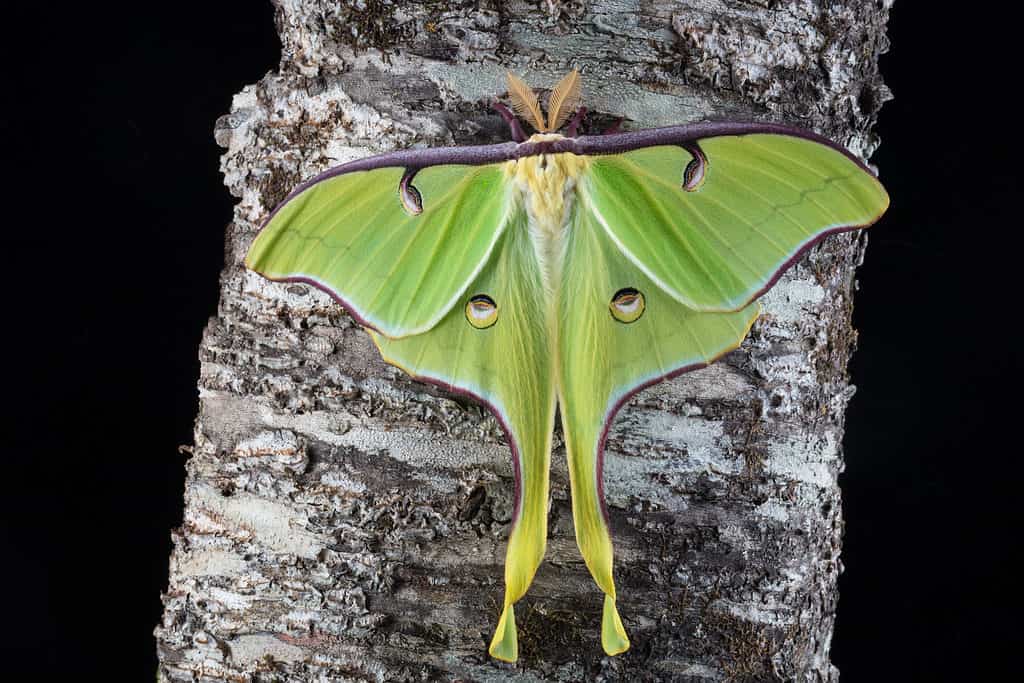
The average wingspan of a luna moth is between 4.5 and 7 inches long.
©Jim and Lynne Weber/Shutterstock.com
As we stated earlier, females emit pheromones in order to attract males. They perch and simply wait for a male to find them to copulate. Whereas females simply pick a nice spot in which to pass the time, males begin the “chase.” Once a male has picked up on chemical messages left by the female, they begin a never-ending journey to reach her before another male. Females mate with the first male who visits, so for any males in the area, the race is on as soon as they detect that pheromone.
A little-known fact is that adult luna moths do not have mouths. That means that after emerging from their cocoon, their sole purpose in life is to find and mate with a member of the opposite gender. Females have little worry about whether or not they will be successful in mating. However, for a male, this experience can be the most important moment in his life. Because of this, they stop at nothing to find the female whose pheromones they picked up on.
Behavioral Differences
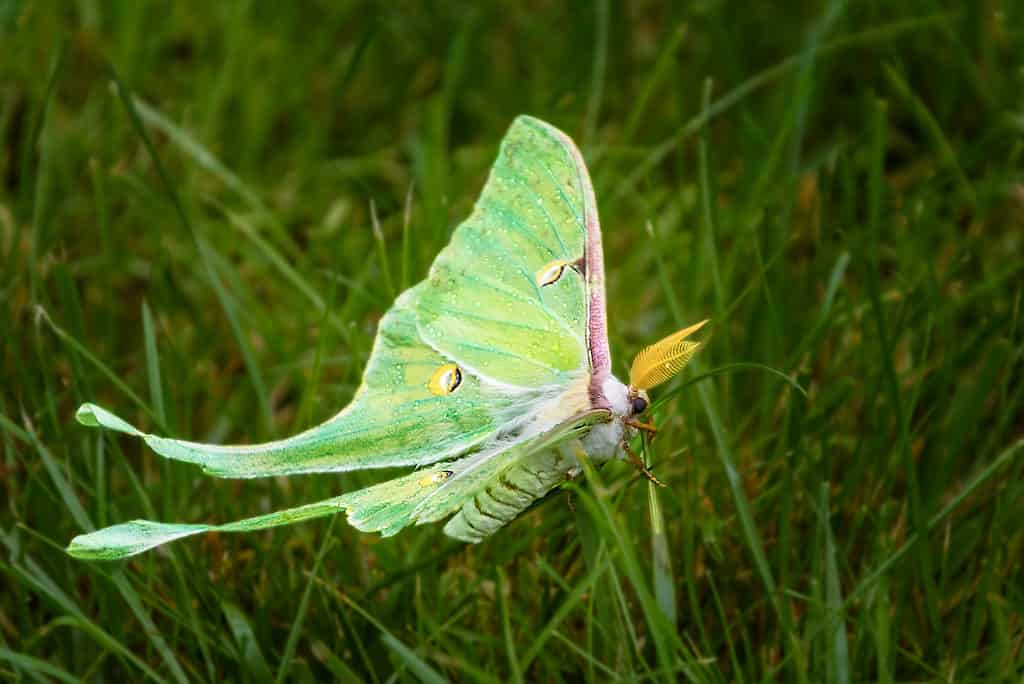
The luna moth (pictured) is one of the biggest moths in North America. The largest is the cecropia moth.
©K Quinn Ferris/Shutterstock.com
After breeding, females no longer have any interest in mating. Their mission has been accomplished, and now that their eggs are fertilized, another journey begins. Females quietly find appropriate places to lay their eggs before eventually slowing down and dying.
Males, on the other hand, attempt to mate with as many females as they possibly can before their time on Earth is up. After successfully (or unsuccessfully) mating, they go on to search for other females in the area. This process repeats until they deplete their energy and pass away.
Final Thoughts
Behavioral differences between male and female luna moths may be harder to observe than physical differences, unless you’re someone who works closely with them in captivity. If you’re lucky enough to see a luna moth in the wild, you may only catch a quick glimpse of it before it flutters away. However, these tips and tricks will help you determine its gender at a glance, so a glimpse is all you need!
The photo featured at the top of this post is © SunflowerMomma/Shutterstock.com
Thank you for reading! Have some feedback for us? Contact the AZ Animals editorial team.





